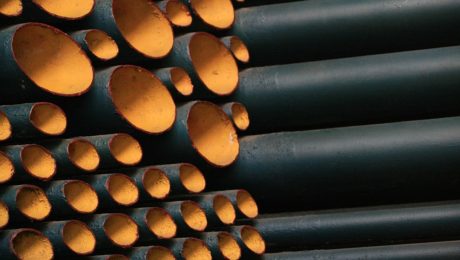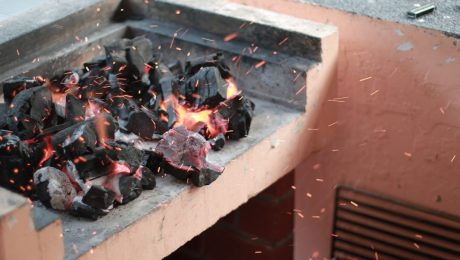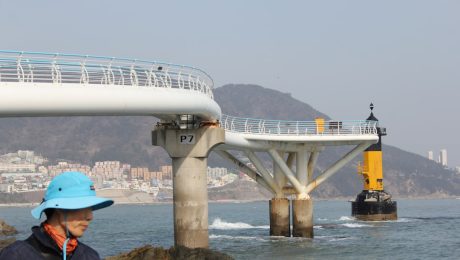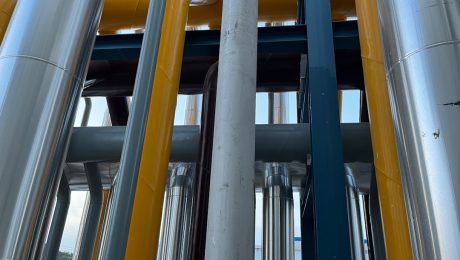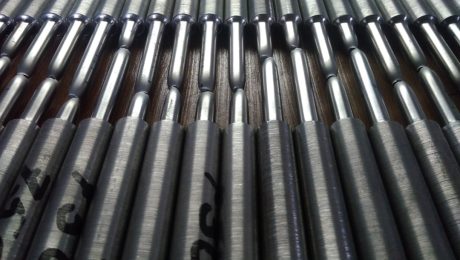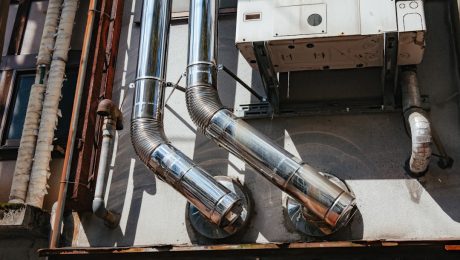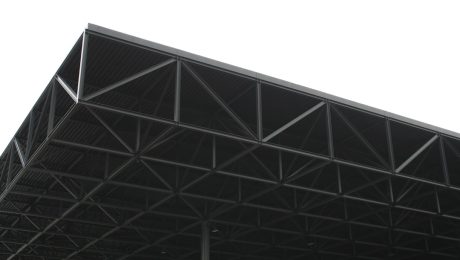In today’s interconnected world, businesses of all sizes are increasingly engaging in international trade. Successfully navigating the complexities of global delivery is crucial for profitability and customer satisfaction. This comprehensive guide will demystify the global delivery process, outlining each stage and highlighting key considerations for a smooth and efficient operation.
1. Order Placement and Processing: The Foundation of Global Delivery
The journey begins with the customer placing an order. This stage involves accurate order capture, including details like shipping address (with precise postal codes), product specifications, and payment information. Efficient order management systems are critical here. Automation plays a significant role, ensuring accuracy and minimizing manual errors. Integration with inventory management systems is crucial to confirm product availability and initiate the picking and packing process. Any discrepancies or missing information at this stage can cause delays later in the process. Clear communication with the customer regarding order status and estimated delivery times is essential for building trust and managing expectations.
2. Picking, Packing, and Inventory Management: Ensuring Accuracy and Efficiency
Once an order is confirmed, the picking process begins. This involves retrieving the ordered items from the warehouse. Accurate picking is vital to avoid sending incorrect items or quantities. Many businesses leverage barcode scanning and warehouse management systems (WMS) to streamline this process and minimize errors. Following picking, the items are carefully packed for shipment. Packaging must be robust enough to withstand the rigors of international transport, protecting the goods from damage during transit. Appropriate cushioning and labeling are critical. Efficient inventory management is also key, ensuring sufficient stock levels to meet demand and minimizing stockouts. Real-time inventory tracking allows businesses to monitor stock levels and anticipate potential shortages.
3. Customs Clearance and Documentation: Navigating International Regulations
This stage is often the most complex and time-consuming in the global delivery process. International shipments require various customs documents, including commercial invoices, packing lists, certificates of origin, and potentially other specific documentation depending on the product and destination country. Accurate and complete documentation is crucial to avoid delays or penalties. Understanding the customs regulations of both the exporting and importing countries is essential. Incorrect or missing documentation can lead to delays, fines, or even the seizure of goods. Working with a customs broker can significantly simplify this process, as they possess the expertise to navigate the complex regulations and ensure smooth clearance.
4. Transportation and Logistics: Choosing the Right Carrier and Route
Selecting the appropriate transportation method is crucial for cost-effectiveness and delivery speed. Options include air freight (fastest but most expensive), sea freight (slowest but cheapest), and road or rail freight (a balance between speed and cost). The choice depends on factors such as the product’s value, weight, dimensions, and delivery timeframe. Tracking the shipment throughout its journey is vital. Real-time tracking systems provide visibility into the shipment’s location and status, allowing businesses and customers to monitor its progress. Selecting a reliable carrier with a proven track record is also essential to minimize the risk of delays or damage.
5. Final Delivery and Customer Service: Completing the Transaction and Building Loyalty
The final stage involves the delivery of the goods to the customer. This includes coordinating with the local delivery service in the destination country. Clear communication with the customer regarding the estimated delivery time and any potential delays is crucial. Providing a tracking number allows customers to monitor the shipment’s progress. Efficient customer service is essential to address any queries or concerns. Post-delivery feedback mechanisms can help identify areas for improvement in the global delivery process. Positive customer experiences contribute to brand loyalty and repeat business. Addressing any issues promptly and professionally demonstrates a commitment to customer satisfaction.
Successfully managing the global delivery process requires careful planning, efficient execution, and a keen understanding of international regulations. By implementing best practices at each stage, businesses can ensure smooth, timely, and cost-effective delivery of their products to customers worldwide, fostering growth and strengthening their global presence.
SEO-Friendly Tags:
- Global Delivery
- International Shipping
- Supply Chain Management
- Cross-Border E-commerce
- Global Logistics
In today’s complex and interconnected global marketplace, product traceability is no longer a luxury—it’s a necessity. From ensuring product safety and quality to managing recalls efficiently and building consumer trust, a robust traceability system is crucial for any manufacturing business. This comprehensive guide delves into the intricacies of product traceability in manufacturing, exploring its various aspects and benefits.
What is Product Traceability in Manufacturing?
Product traceability, in the context of manufacturing, refers to the ability to track a product’s journey throughout its entire lifecycle. This journey begins from the sourcing of raw materials and extends through each stage of production, processing, distribution, and finally, to the end consumer. It involves documenting and recording all relevant information at each stage, allowing for complete visibility into the product’s history. This information might include details about the origin of materials, manufacturing processes, handling procedures, storage conditions, and even the specific equipment used. Effective traceability enables businesses to identify the source of any defects or contamination quickly and efficiently, minimizing losses and protecting their reputation.
Benefits of Implementing a Robust Traceability System
The advantages of implementing a comprehensive product traceability system are multifaceted and significant. Firstly, it enhances product safety. By tracking every step of the production process, manufacturers can quickly identify and isolate contaminated or defective products, preventing them from reaching consumers. This is particularly crucial in industries like food and pharmaceuticals, where product safety is paramount. Secondly, traceability improves quality control. By analyzing data gathered throughout the production process, manufacturers can pinpoint areas for improvement, optimizing their processes and reducing waste. Thirdly, it streamlines recall management. In the event of a recall, a well-defined traceability system allows for the quick and precise identification of affected products, minimizing disruption and financial losses. Finally, traceability boosts consumer trust. Transparency and accountability are highly valued by consumers, and demonstrating a commitment to traceability builds confidence in the brand and its products.
Methods and Technologies for Implementing Traceability
Several methods and technologies can be employed to implement a robust product traceability system. Barcodes and QR codes provide a simple and cost-effective way to track products throughout the supply chain. RFID (Radio-Frequency Identification) tags offer greater capabilities, allowing for automated tracking and real-time monitoring of products. Blockchain technology is increasingly being adopted for its ability to create a secure and transparent record of product information, making it tamper-proof and highly reliable. Data management systems, such as Enterprise Resource Planning (ERP) software and specialized traceability software, are crucial for collecting, storing, and analyzing traceability data effectively. The choice of method depends on factors such as budget, industry regulations, and the complexity of the product and supply chain.
Challenges in Implementing and Maintaining Traceability
While the benefits of product traceability are clear, implementing and maintaining a robust system can present several challenges. Data integration can be complex, requiring the integration of data from various sources across the supply chain. Data security is a critical concern, particularly with sensitive product information. Cost of implementation can be significant, particularly for smaller businesses. Lack of standardization across industries can hinder interoperability and data exchange. Maintaining data accuracy throughout the entire supply chain requires careful planning and execution. Overcoming these challenges requires careful planning, investment in appropriate technology, and a commitment to collaboration across the entire supply chain.
Future Trends in Product Traceability
The field of product traceability is constantly evolving, driven by technological advancements and increasing consumer demand for transparency. The adoption of Artificial Intelligence (AI) and Machine Learning (ML) is expected to enhance data analysis and predictive capabilities, improving decision-making and preventing potential problems. Blockchain technology is poised to play an even greater role, enabling secure and transparent tracking of products across the entire supply chain. Internet of Things (IoT) devices will further enhance real-time monitoring and tracking of products. Increased regulatory pressure will drive the adoption of more robust traceability systems, particularly in industries with stringent safety regulations. The future of product traceability lies in the integration of these technologies to create seamless, secure, and efficient systems that deliver greater transparency and consumer trust.
Implementing a comprehensive product traceability system is a strategic investment that offers significant returns in terms of improved safety, quality, efficiency, and consumer trust. By addressing the challenges and embracing the latest technologies, manufacturers can build a resilient and future-proof traceability system that strengthens their business and enhances their position in the global marketplace.
The oil and gas industry relies heavily on robust and reliable pipelines to transport crucial resources. At the heart of this infrastructure lies the API 5L standard, a globally recognized specification for line pipes used in these critical applications. This comprehensive guide will delve into the complexities of API 5L, breaking down its key components and providing a clear understanding of its importance.
Understanding API 5L Specifications
API 5L, officially titled “Specification for Line Pipe,” is published by the American Petroleum Institute (API). It outlines the requirements for seamless and welded steel line pipes intended for the conveyance of petroleum, natural gas, and other liquids and gases. The standard covers a wide range of aspects, including:
- Material Requirements: API 5L specifies the chemical composition and mechanical properties of the steel used in the manufacturing of line pipes. These properties are crucial for ensuring the pipe’s strength, ductility, and resistance to corrosion.
- Manufacturing Processes: The standard details the acceptable manufacturing processes for both seamless and welded pipes, ensuring consistent quality and adherence to dimensional tolerances.
- Testing Procedures: Rigorous testing is mandated to verify the pipe’s compliance with the specified requirements. These tests include tensile strength tests, bend tests, flattening tests, and hydrostatic tests, among others.
- Marking and Identification: API 5L dictates the marking requirements for each pipe, ensuring traceability and proper identification throughout its lifecycle.
The Significance of API 5L Grades
API 5L defines various grades of line pipe, each designed for specific applications and pressure requirements. These grades are categorized based on their yield strength and other mechanical properties. Common grades include:
- Grade B: A general-purpose grade suitable for a wide range of applications.
- Grade X42, X52, X60, X65, X70, X80, and higher: These grades represent higher strength steels, used in applications requiring greater pressure resistance. The number indicates the minimum specified yield strength in ksi (kilopounds per square inch).
- L80, L100, and higher: These grades are specifically designed for high-pressure applications and offer enhanced resistance to internal and external pressures.
Selecting the appropriate grade is crucial for ensuring the pipeline’s integrity and safety under operating conditions.
API 5L Product Specifications Levels (PSLs)
API 5L also incorporates Product Specification Levels (PSLs), which further categorize line pipes based on their intended application and required testing rigor. PSL1 represents a lower level of testing and is suitable for less demanding applications, while PSL2 involves more stringent testing and is required for higher-pressure and critical applications. The choice between PSL1 and PSL2 directly impacts the cost and testing requirements of the pipe.
Understanding API 5L Testing and Quality Control
Rigorous testing is integral to ensuring the quality and reliability of API 5L line pipes. These tests are performed at various stages of the manufacturing process and include:
- Chemical Composition Analysis: To verify that the steel meets the specified chemical requirements.
- Mechanical Testing: Including tensile strength, yield strength, elongation, and reduction of area tests.
- Hydrostatic Testing: To ensure the pipe can withstand the intended operating pressure without failure.
- Non-Destructive Testing (NDT): Methods like ultrasonic testing (UT) and radiographic testing (RT) are used to detect internal flaws and defects.
The specific tests required depend on the grade and PSL of the pipe.
Applications of API 5L Line Pipes
API 5L line pipes find widespread applications in the oil and gas industry, including:
- Crude oil pipelines: Transporting crude oil from production sites to refineries.
- Natural gas pipelines: Transporting natural gas from production fields to processing plants and distribution networks.
- Refined product pipelines: Transporting refined petroleum products, such as gasoline and diesel fuel.
- Water injection pipelines: Used in enhanced oil recovery operations.
- Other industrial applications: Transporting various other liquids and gases in industrial settings.
The choice of pipe grade and PSL depends on the specific application, pressure, and temperature requirements.
Understanding API 5L is crucial for anyone involved in the design, construction, and operation of pipelines in the oil and gas industry. Adherence to this standard ensures the safety, reliability, and longevity of these critical infrastructure components. Always consult the latest edition of the API 5L standard for the most up-to-date information.
SEO-Friendly Tags:
API 5L, API 5L Pipe Standard, Line Pipe, Oil and Gas Pipelines, PSL1 PSL2
body { font-family: sans-serif; line-height: 1.6; }
h1, h2, h3 { color: #333; }
h1 { font-size: 2.5em; }
h2 { font-size: 2em; }
h3 { font-size: 1.5em; }
Fire, a force of nature both destructive and essential, demands respect. In the face of its power, the need for materials that can withstand its intensity becomes paramount. Fire-resistant steel, a marvel of modern metallurgy, plays a critical role in safeguarding lives and property. This comprehensive guide delves into the fascinating world of fire-resistant steel, exploring its properties, applications, and the ongoing advancements shaping its future.
Understanding the Properties of Fire-Resistant Steel
Fire-resistant steel isn’t simply steel that’s been painted with fire retardant. Its resistance stems from its inherent properties and composition. Unlike regular steel, which loses strength and integrity at high temperatures, fire-resistant steel maintains its structural capabilities for extended periods under extreme heat. This is achieved through several key factors:
- Alloying Elements: The addition of elements like chromium, nickel, molybdenum, and manganese significantly enhances the steel’s high-temperature strength and oxidation resistance. These elements form protective oxide layers that slow down the rate of oxidation and prevent the steel from weakening.
- Microstructure: The microstructure of fire-resistant steel plays a crucial role in its performance. A refined and homogenous microstructure contributes to better heat resistance and improved mechanical properties at elevated temperatures.
- Heat Treatment: Specific heat treatments are employed to optimize the steel’s microstructure and achieve the desired balance of strength, ductility, and fire resistance. This process further enhances the material’s ability to withstand thermal shock.
Types of Fire-Resistant Steel and Their Applications
Fire-resistant steel isn’t a monolithic material. Different grades are available, each tailored for specific applications based on required temperature resistance and mechanical properties:
- Stainless Steels: Certain stainless steel grades, particularly those with high chromium content, exhibit excellent fire resistance. They are frequently used in high-temperature applications such as furnaces and exhaust systems.
- High-Strength Low-Alloy Steels (HSLA): These steels offer a good balance of strength and fire resistance, making them suitable for structural applications in buildings and bridges.
- Heat-Resistant Steels: These are specifically designed for applications involving extremely high temperatures, such as power generation and petrochemical processing.
Applications span diverse sectors, including construction (fire-rated doors, structural components), transportation (firewalls in vehicles), and industrial manufacturing (high-temperature equipment).
Testing and Standards for Fire-Resistant Steel
Rigorous testing is essential to ensure the fire resistance of steel. Standard test methods, such as those defined by ASTM International and ISO, are used to evaluate the material’s performance under fire conditions. These tests typically involve exposing specimens to controlled fire environments and measuring their structural integrity and temperature changes over time. Key parameters assessed include:
- Temperature Resistance: The ability of the steel to maintain its strength and structural integrity at elevated temperatures.
- Oxidation Resistance: The resistance to corrosion and deterioration at high temperatures.
- Thermal Shock Resistance: The ability to withstand rapid temperature fluctuations without cracking or failure.
Compliance with relevant building codes and industry standards is crucial for ensuring the safety and reliability of structures incorporating fire-resistant steel.
The Future of Fire-Resistant Steel: Innovations and Advancements
Research and development continue to push the boundaries of fire-resistant steel. Innovations focus on enhancing existing properties and exploring new material combinations. Some key areas of advancement include:
- Advanced Alloying: The exploration of novel alloying elements and compositions to further improve high-temperature strength, oxidation resistance, and thermal shock resistance.
- Nanomaterials: The incorporation of nanomaterials into steel matrices to enhance its mechanical properties and fire resistance.
- Protective Coatings: Development of advanced coatings that provide additional protection against oxidation and enhance the overall fire resistance of the steel.
These advancements promise even greater safety and durability in structures and equipment exposed to fire hazards.
Safety Considerations and Best Practices
While fire-resistant steel offers significant protection, it’s crucial to remember that it’s not invulnerable. Proper design, installation, and maintenance are critical for maximizing its effectiveness. Key safety considerations include:
- Proper Design: Structural designs should account for the specific properties of the fire-resistant steel and the anticipated fire conditions.
- Correct Installation: Careful installation is crucial to ensure the integrity of the structural elements and prevent potential weaknesses.
- Regular Inspection and Maintenance: Regular inspections and maintenance are essential to identify and address any potential damage or deterioration that could compromise the fire resistance.
- Integration with Other Fire Protection Systems: Fire-resistant steel should be used in conjunction with other fire protection measures, such as sprinklers and fire alarms, for comprehensive fire safety.
By adhering to best practices, we can harness the full potential of fire-resistant steel to create safer and more resilient structures and environments.
Tags: fire resistant steel, fireproof steel, high temperature steel, structural steel, building materials
Steel bridges, marvels of engineering, grace our landscapes and facilitate transportation across rivers, valleys, and roadways. Their design is a complex process, requiring a meticulous blend of engineering principles, material science, and innovative problem-solving. This guide delves into the key stages of steel bridge design, offering a comprehensive overview for both enthusiasts and professionals.
1. Initial Conceptualization and Site Analysis
The journey of a steel bridge begins long before the first steel beam is fabricated. The initial phase involves a thorough site analysis, encompassing several critical aspects. This includes a detailed topographic survey to determine the exact location and terrain, geological investigations to assess soil conditions and potential foundation challenges, hydrological studies to understand water flow and potential flooding, and environmental impact assessments to minimize ecological disruption. Furthermore, this stage involves defining the bridge’s purpose – is it for vehicular traffic, pedestrian use, or a combination? The anticipated load capacity, including live loads (vehicles, pedestrians) and dead loads (the bridge’s own weight), must be meticulously calculated. Preliminary design concepts are then developed, considering factors such as aesthetics, environmental integration, and the overall budget. This stage often involves the use of sophisticated software for 3D modeling and preliminary stress analysis.
2. Structural Design and Material Selection
Once the initial concept is approved, the detailed structural design commences. This phase involves choosing the most appropriate type of steel bridge – common types include beam bridges, truss bridges, arch bridges, and suspension bridges, each with its own strengths and weaknesses. The selection depends heavily on factors like span length, site conditions, and aesthetic considerations. Detailed calculations are performed to determine the required cross-sectional dimensions of the steel members (beams, columns, etc.), ensuring they can withstand the anticipated loads while remaining within acceptable stress limits. Material selection is crucial; different grades of steel offer varying strength and ductility, influencing cost and performance. Advanced finite element analysis (FEA) software is extensively used to simulate real-world loading conditions and refine the design for optimal structural integrity and safety. This stage also involves the design of connections – the points where individual steel members are joined together. These connections are critical for transferring loads effectively and ensuring the overall stability of the bridge.
3. Detailing and Fabrication Drawings
With the structural design finalized, the next step is to create detailed fabrication drawings. These drawings provide precise instructions to the fabricators, outlining every aspect of the steel members, including dimensions, material specifications, and connection details. This process is highly meticulous, demanding precision and accuracy to ensure that the fabricated components fit together seamlessly during construction. The drawings typically include detailed views, sections, and annotations, specifying welding procedures, bolt specifications, and surface treatments. This phase also involves the development of erection plans, outlining the step-by-step procedure for assembling the bridge on-site. Careful consideration is given to logistical aspects, such as transportation of the fabricated components to the construction site and the use of specialized equipment during erection.
4. Construction and Quality Control
The construction phase involves the fabrication of steel components in a controlled environment, followed by their transportation and erection at the bridge site. Rigorous quality control measures are implemented throughout this process. This includes regular inspections to ensure that the fabricated components conform to the design specifications and that welding procedures are properly executed. Non-destructive testing (NDT) techniques, such as ultrasonic testing and magnetic particle inspection, are employed to detect any internal flaws in the steel members. During erection, safety is paramount, with strict adherence to safety regulations and procedures. Specialized equipment, such as cranes and lifting devices, are used to carefully position and connect the steel components. Regular inspections are conducted throughout the construction process to ensure that the bridge is being built according to the design and that safety standards are maintained. This phase also involves the construction of the bridge’s foundation, which is crucial for transferring the bridge’s weight to the underlying soil or rock.
5. Testing and Commissioning
Once the bridge is constructed, a series of tests are conducted to verify its structural integrity and performance. These tests may include static load tests, where known loads are applied to the bridge to measure its deflection and stress levels. Dynamic load tests may also be conducted to simulate the effects of moving vehicles or wind loads. The results of these tests are compared to the design predictions to ensure that the bridge meets the required performance criteria. Instrumentation may be installed to monitor the bridge’s behavior under service loads. After successful completion of the testing phase, the bridge is commissioned and opened to traffic. Regular inspections and maintenance are crucial throughout the bridge’s service life to ensure its continued safety and functionality. This includes visual inspections, routine maintenance, and periodic load tests to detect any signs of deterioration or damage.
Designing a steel bridge is a multidisciplinary endeavor, demanding expertise in structural engineering, materials science, construction management, and project planning. The process involves meticulous planning, precise calculations, and rigorous quality control to ensure the creation of a safe, durable, and aesthetically pleasing structure that will serve its purpose for many years to come.
SEO Tags:
Steel Bridge Design, Bridge Engineering, Structural Steel Design, Steel Bridge Construction, Civil Engineering
Cold drawn round steel bars are a cornerstone of numerous industries, offering a unique blend of precision, strength, and durability. This comprehensive guide will delve into the intricacies of these versatile materials, exploring their manufacturing process, properties, applications, advantages, and selection criteria.
The Cold Drawing Process: Precision Engineering at its Finest
Unlike hot-rolled steel bars, which are shaped at high temperatures, cold drawn bars undergo a process of deformation at room temperature. This involves pulling a pre-rolled bar through a series of dies with progressively smaller diameters. This process significantly alters the material’s microstructure and properties. The die’s precise dimensions ensure exceptionally tight tolerances on the final bar’s diameter, typically within ±0.005 inches or even tighter depending on the required specifications. The cold working process also introduces significant strain hardening, enhancing the bar’s tensile strength, yield strength, and surface finish. This process also improves the bar’s straightness, making it ideal for applications requiring precise dimensional accuracy.
Exceptional Mechanical Properties: Strength, Durability, and More
The cold drawing process imparts several desirable mechanical properties to the steel bars. The strain hardening increases the tensile strength and yield strength considerably compared to hot-rolled counterparts. This means the bars can withstand greater forces before yielding or fracturing. Furthermore, cold drawing improves the material’s surface finish, leading to enhanced fatigue resistance. The smoother surface reduces stress concentrations that can initiate fatigue cracks. The improved surface finish also lends itself to better corrosion resistance, although additional coatings may be applied for enhanced protection in harsh environments. The precise dimensions also contribute to improved dimensional stability, crucial for applications where precise fitting is essential.
Diverse Applications: From Automotive to Construction
The combination of high strength, precision, and durability makes cold drawn round steel bars indispensable across a wide array of industries. In the automotive industry, they are used extensively in components requiring high strength and precision, such as axles, shafts, and connecting rods. The construction industry utilizes these bars in reinforcing structures, providing exceptional strength and stability. The manufacturing sector employs them in various machinery components, benefiting from their precise dimensions and high strength. Other applications include hydraulic cylinders, pneumatic components, and various custom-engineered parts requiring high-precision tolerances and strength. The versatility of cold drawn round steel bars makes them a crucial material in many modern engineering applications.
Advantages Over Other Steel Types: Why Choose Cold Drawn?
Compared to hot-rolled steel bars, cold drawn bars offer several key advantages. The most significant is the improved surface finish and dimensional accuracy. This reduces machining requirements, saving time and cost in subsequent manufacturing processes. The enhanced mechanical properties, particularly the increased strength and fatigue resistance, make cold drawn bars ideal for applications demanding high performance and reliability. The superior straightness also simplifies assembly and reduces potential alignment issues. While the initial cost may be slightly higher compared to hot-rolled bars, the long-term benefits in terms of reduced machining, improved performance, and enhanced reliability often outweigh the initial investment.
Selecting the Right Cold Drawn Steel Bar: Factors to Consider
Choosing the appropriate cold drawn round steel bar necessitates careful consideration of several factors. The required grade of steel is crucial, as different grades offer varying strength, hardness, and ductility. The desired diameter and length are essential for proper fitting and functionality. The surface finish requirements influence the choice of drawing process and potential post-processing treatments. The application environment also plays a critical role, dictating the need for specific corrosion resistance or other specialized properties. Consulting with a materials specialist or supplier can ensure the selection of the optimal cold drawn steel bar for a given application, maximizing performance and longevity.
In conclusion, cold drawn round steel bars represent a sophisticated material solution offering exceptional strength, precision, and durability. Understanding their manufacturing process, properties, and applications is key to leveraging their full potential across a diverse range of industries.
body {
font-family: sans-serif;
line-height: 1.6;
}
h1, h2, h3 {
color: #333;
}
Cold drawn hexagonal bars are a highly versatile and robust material used across numerous industries. Their unique hexagonal shape, combined with the precision and strength imparted by the cold drawing process, makes them ideal for a wide range of applications. This comprehensive guide delves into the intricacies of cold drawn hexagonal bars, exploring their manufacturing, properties, advantages, and diverse applications.
The Cold Drawing Process: Shaping Strength and Precision
The creation of cold drawn hexagonal bars begins with a hot-rolled round bar. This initial bar undergoes a series of precise steps to achieve its final hexagonal form and superior properties. The process involves pulling the heated bar through a series of progressively smaller dies, under high tensile stress. This cold drawing process significantly alters the material’s microstructure. The metal undergoes significant work hardening, leading to increased tensile strength, yield strength, and improved surface finish. The lack of heat during this process eliminates oxidation and scaling, resulting in a cleaner, more precise final product. The intricate dies used in the process ensure the accurate and consistent hexagonal shape, with tight tolerances on dimensions. This precision is crucial for applications requiring exact fits and high dimensional accuracy.
Material Properties: Strength, Hardness, and Durability
The cold drawing process significantly enhances the mechanical properties of the hexagonal bars. Compared to their hot-rolled counterparts, cold drawn hexagonal bars exhibit:
- Higher Tensile Strength: The work hardening significantly increases the material’s resistance to tensile forces.
- Improved Yield Strength: The point at which the material begins to deform permanently is increased, leading to greater structural integrity.
- Enhanced Surface Finish: The cold drawing process produces a smoother, more refined surface, reducing friction and improving wear resistance.
- Increased Hardness: The material becomes harder and more resistant to scratching and abrasion.
- Better Dimensional Accuracy: The cold drawing process results in tighter tolerances and greater dimensional consistency.
These superior properties contribute to the overall durability and longevity of components manufactured using cold drawn hexagonal bars.
Applications Across Industries: Versatility in Action
The unique combination of strength, precision, and versatility makes cold drawn hexagonal bars indispensable in a wide range of industries. Some key applications include:
- Automotive: Used in various components, including axles, shafts, and connecting rods, where high strength and durability are critical.
- Aerospace: Their lightweight yet strong nature makes them suitable for applications requiring high strength-to-weight ratios.
- Construction: Used in structural elements, bolts, and fasteners where reliable strength and dimensional accuracy are crucial.
- Machinery Manufacturing: Ideal for creating shafts, spindles, and other machine parts demanding high precision and resistance to wear.
- Agricultural Machinery: Used in components subjected to high stress and impact, ensuring long-term performance.
- Hydraulic and Pneumatic Systems: Their strength and precise dimensions are crucial for ensuring leak-free and efficient operation.
The specific material grade and dimensions of the hexagonal bar are chosen based on the specific demands of the application.
Advantages of Cold Drawn Hexagonal Bars: Why Choose This Material?
Several advantages make cold drawn hexagonal bars a preferred choice over other materials:
- Enhanced Strength and Durability: The cold drawing process significantly improves the material’s mechanical properties.
- Superior Surface Finish: The smooth surface reduces friction and wear, extending component lifespan.
- High Dimensional Accuracy: Tight tolerances ensure precise fits and ease of assembly.
- Cost-Effectiveness: While the initial cost might be slightly higher than hot-rolled bars, the enhanced properties often lead to cost savings in the long run due to increased durability and reduced maintenance.
- Wide Range of Materials: Cold drawn hexagonal bars can be produced from various steel grades and alloys, allowing for customization to meet specific application requirements.
These advantages make cold drawn hexagonal bars a highly efficient and reliable material for a wide range of engineering applications.
Specifications and Material Grades: Choosing the Right Bar
Cold drawn hexagonal bars are available in a wide range of materials, sizes, and tolerances. Common material grades include various carbon steels, alloy steels, and stainless steels. The choice of material depends on the specific application requirements, considering factors like strength, corrosion resistance, and temperature tolerance. Detailed specifications, including dimensions, tolerances, and material properties, are usually provided by the manufacturer. It’s crucial to consult these specifications to ensure the chosen bar meets the necessary requirements for the intended application. Understanding these specifications is key to selecting the appropriate bar for optimal performance and longevity.
Choosing the right cold drawn hexagonal bar involves careful consideration of all the factors discussed above. By understanding the manufacturing process, material properties, applications, and advantages, engineers and designers can select the optimal material for their specific needs, ensuring the success and longevity of their projects.
SEO Tags: Cold drawn hexagonal bars, hexagonal steel bars, cold drawn steel, precision steel bars, engineering materials
In today’s world, noise pollution is a significant concern, impacting productivity, well-being, and even health. Effective sound control is no longer a luxury but a necessity, particularly in buildings designed for various purposes. Acoustic steel profile systems have emerged as a leading solution, offering a robust and aesthetically pleasing way to manage sound within a space. This comprehensive guide delves into the intricacies of these systems, exploring their design, advantages, applications, installation, and future trends.
Understanding the Design of Acoustic Steel Profile Systems
Acoustic steel profile systems are essentially frameworks constructed from lightweight yet strong steel profiles. These profiles are strategically designed to support and house various sound-absorbing materials, such as mineral wool, fiberglass, or recycled materials. The design often incorporates perforated metal panels or other facing materials for an aesthetically pleasing finish. The key to their effectiveness lies in the combination of the resilient steel framework and the sound-absorbing infill. The steel provides structural integrity and stability, while the infill material absorbs sound waves, preventing them from reflecting and creating unwanted noise. Different profile designs cater to various acoustic needs and aesthetic preferences, ranging from simple linear systems to more complex, curved designs.
The Benefits of Choosing Acoustic Steel Profile Systems
Acoustic steel profile systems offer a multitude of advantages compared to traditional soundproofing methods. Firstly, they are incredibly versatile. Their modular design allows for easy customization to fit any space and architectural style. Secondly, they are highly effective. The combination of the steel frame and sound-absorbing material significantly reduces noise transmission, offering superior sound insulation compared to many other solutions. Thirdly, they are durable and long-lasting. Steel is resistant to damage and degradation, ensuring the system’s effectiveness for years to come. Furthermore, they are relatively easy to install, minimizing disruption and project timelines. Finally, they offer excellent fire resistance, adding an important layer of safety to the building.
Applications of Acoustic Steel Profile Systems: Where They Shine
The versatility of acoustic steel profile systems makes them suitable for a wide range of applications. They are commonly used in offices to create quiet zones and improve concentration. In educational settings, they help reduce noise distractions in classrooms and libraries. Hospitals and healthcare facilities benefit from their ability to minimize noise levels, creating a more calming and therapeutic environment. Industrial settings utilize them to control noise pollution from machinery and equipment. Furthermore, they are increasingly popular in residential buildings, enhancing sound insulation between apartments and reducing noise intrusion from external sources. The design flexibility allows for seamless integration into both new constructions and refurbishment projects.
Installation and Maintenance of Acoustic Steel Profile Systems
The installation process of acoustic steel profile systems typically involves a team of skilled professionals. The process begins with careful planning and measurement to ensure a precise fit. The steel profiles are then fixed to the existing structure using appropriate fasteners. The sound-absorbing material is carefully placed within the framework, ensuring proper density and coverage. Finally, the chosen facing material, such as perforated metal panels, is affixed to the system, completing the installation. Maintenance is generally minimal. Regular cleaning of the facing material is usually sufficient to maintain the system’s appearance and performance. The robust nature of steel ensures long-term durability and minimal need for repairs.
Future Trends in Acoustic Steel Profile Systems: Innovation and Sustainability
The field of acoustic steel profile systems is constantly evolving. Future trends point towards increased integration of sustainable materials, such as recycled content in the profiles and sound-absorbing infill. Smart technology integration is also on the rise, with systems potentially incorporating sensors to monitor noise levels and adjust sound absorption dynamically. Improved design aesthetics, incorporating more intricate patterns and finishes, will enhance their architectural appeal. Research into new sound-absorbing materials will further enhance their effectiveness and potentially reduce their overall weight and environmental impact. The development of prefabricated modular systems will streamline installation and reduce construction times.
Acoustic steel profile systems represent a significant advancement in noise control technology. Their combination of effectiveness, versatility, and durability makes them a valuable asset in various settings. As technology and design continue to evolve, these systems will likely play an even greater role in shaping our built environment, creating quieter, more productive, and healthier spaces for everyone.
SEO Tags:
- Acoustic Steel Profile Systems
- Soundproofing Steel Profiles
- Noise Control Solutions
- Acoustic Panels Steel
- Steel Profile Acoustic Insulation
Electric Resistance Welded (ERW) pipes are a cornerstone of modern construction and industrial applications. Their efficient manufacturing process and versatile properties make them a cost-effective and reliable choice for a wide range of projects. This comprehensive guide delves into the world of ERW pipes, exploring their manufacturing, applications, advantages, limitations, and future prospects.
The ERW Pipe Manufacturing Process: A Detailed Look
The creation of ERW pipes begins with a steel strip, carefully coiled and fed into a forming mill. This mill shapes the strip into a cylindrical form, preparing it for the crucial welding stage. High-frequency electric current is then applied to the edges of the overlapping strip, heating them to the point of fusion. Simultaneously, pressure is applied to forge a seamless weld, creating a continuous pipe. This process is remarkably efficient, capable of producing long lengths of pipe with consistent dimensions and high-quality welds. Post-weld processes, including sizing, straightening, and inspection, ensure the final product meets stringent quality standards. The entire process is automated and highly controlled, minimizing human error and maximizing productivity. Different grades of steel can be used, influencing the pipe’s strength and suitability for specific applications. This flexibility is a key advantage of the ERW process.
Diverse Applications of ERW Pipes Across Industries
The strength, durability, and cost-effectiveness of ERW pipes make them suitable for a vast array of applications. In the construction industry, they are widely used for structural purposes, including scaffolding, building frameworks, and supporting infrastructure. Their ability to withstand significant stress and pressure makes them ideal for water and gas pipelines, ensuring the safe and efficient transportation of essential resources. The automotive industry also relies heavily on ERW pipes for chassis components, offering a balance of strength and lightweight design. Furthermore, ERW pipes find their place in agricultural irrigation systems, providing a robust and reliable solution for water distribution. The oil and gas industry utilizes ERW pipes in pipelines transporting crude oil and natural gas, showcasing their ability to handle high pressures and corrosive environments (depending on the chosen steel grade and protective coatings).
Advantages of ERW Pipes: Why Choose This Option?
Several factors contribute to the popularity of ERW pipes. Firstly, their cost-effectiveness is a significant advantage, often making them a more economical choice compared to other pipe manufacturing methods. The high-speed, automated production process contributes to this affordability. Secondly, ERW pipes offer excellent strength and durability, capable of withstanding significant pressure and stress. This makes them suitable for a wide range of demanding applications. Thirdly, the consistent dimensions produced during the manufacturing process ensure easy installation and precise fitting. Finally, ERW pipes are available in a wide range of sizes and specifications, allowing for flexibility in design and application. The ability to tailor the pipe’s properties through the selection of different steel grades further enhances their versatility.
Limitations of ERW Pipes: Understanding the Drawbacks
While ERW pipes offer many benefits, it’s essential to acknowledge their limitations. One key drawback is the potential for weld imperfections, although modern manufacturing processes have significantly minimized this risk. Thorough quality control measures are crucial to ensure the integrity of the welds. Furthermore, compared to seamless pipes, ERW pipes might exhibit slightly reduced ductility in some cases, impacting their ability to withstand bending stress. However, advancements in steel metallurgy and welding techniques are continuously improving the overall quality and performance of ERW pipes. The choice between ERW and seamless pipes ultimately depends on the specific application requirements and the acceptable trade-offs between cost, strength, and ductility.
The Future of ERW Pipes: Innovation and Advancements
The future of ERW pipes is bright, driven by ongoing innovations in manufacturing techniques and material science. Research is focused on improving weld quality, enhancing the strength and durability of the pipes, and exploring the use of advanced materials, such as high-strength low-alloy (HSLA) steels, to meet the demands of increasingly challenging applications. Furthermore, developments in automation and process optimization are expected to further enhance the efficiency and cost-effectiveness of ERW pipe production. The integration of smart manufacturing technologies and predictive maintenance strategies will likely lead to improvements in quality control and reduce downtime. The continued demand for robust and cost-effective piping solutions across various industries ensures that ERW pipes will remain a vital component of infrastructure and industrial processes for years to come.
Tags: ERW Pipes, Electric Resistance Welded Pipes, Steel Pipes, Pipe Applications, Construction Materials
In today’s world, noise pollution is a significant concern, impacting productivity, health, and overall well-being. Effective sound control is crucial in various environments, from bustling offices to quiet residential spaces. Acoustic steel profile systems offer a robust and versatile solution for managing noise levels, providing superior sound insulation and creating quieter, more comfortable environments. This comprehensive guide explores the intricacies of these systems, delving into their design, installation, benefits, and applications.
Understanding the Mechanics of Acoustic Steel Profile Systems
Acoustic steel profile systems are engineered structures designed to minimize sound transmission. Unlike traditional methods relying solely on dense materials like concrete or drywall, these systems leverage the properties of steel profiles combined with specialized acoustic materials to achieve significant noise reduction. The core principle revolves around creating an air gap within the system, disrupting sound waves and reducing their energy before they can penetrate through. This air gap is often filled with sound-absorbing materials like mineral wool or fiberglass, further enhancing the system’s acoustic performance. The steel profiles themselves provide structural integrity and support for the entire system, ensuring durability and stability.
Design Considerations for Optimal Acoustic Performance
Designing an effective acoustic steel profile system requires careful consideration of several factors. The first is the desired level of sound reduction, often expressed in Sound Transmission Class (STC) ratings. Higher STC ratings indicate better sound insulation. The choice of steel profile, its thickness, and spacing directly impact the system’s performance. The type and density of the sound-absorbing material used within the air gap are also crucial. Furthermore, the system’s overall construction, including sealing and connections, plays a significant role in preventing sound leakage. Proper design also considers the frequency range of the noise being addressed, as different materials and designs are more effective at attenuating certain frequencies. Consultations with acoustic engineers are often recommended for complex projects to ensure optimal design and performance.
Installation Techniques and Best Practices for Acoustic Steel Profile Systems
Proper installation is critical to achieving the intended acoustic performance of the system. The process generally involves fixing the steel profiles to a supporting structure, ensuring a secure and vibration-free connection. The sound-absorbing material is then carefully placed within the cavity created by the profiles. Careful attention must be paid to sealing all gaps and joints to prevent sound bridging. This may involve using acoustic sealant or gaskets. The chosen cladding material, whether drywall, plasterboard, or another material, is then affixed to the steel profiles, completing the system. Experienced installers are crucial for ensuring a flawless installation, avoiding common mistakes that can compromise the system’s effectiveness. Regular quality checks throughout the installation process are essential.
Applications of Acoustic Steel Profile Systems: Where They Shine
Acoustic steel profile systems find applications across a wide range of environments where noise control is paramount. They are frequently used in:
- Commercial Buildings: Offices, hotels, and retail spaces benefit from reduced noise levels, improving productivity and customer experience.
- Industrial Settings: Factories and workshops can significantly reduce noise pollution affecting worker health and safety.
- Residential Construction: Apartment buildings and houses can achieve enhanced sound insulation between units or floors.
- Recording Studios and Home Theaters: These spaces require exceptional sound isolation, making acoustic steel profile systems ideal for creating controlled acoustic environments.
- Transportation Infrastructure: Noise barriers constructed using these systems can effectively reduce traffic noise impacting nearby communities.
These systems offer a flexible and adaptable solution, capable of being integrated into various architectural designs.
Benefits of Choosing Acoustic Steel Profile Systems
Several key advantages make acoustic steel profile systems a compelling choice for noise control projects:
- High Sound Reduction: They offer superior sound insulation compared to traditional methods.
- Durability and Longevity: The steel structure ensures long-lasting performance and resistance to damage.
- Versatility and Adaptability: They can be integrated into various designs and applications.
- Fire Resistance: Steel profiles inherently contribute to fire safety.
- Improved Thermal Insulation: In some cases, the air gap and insulation material can also improve thermal performance.
- Cost-Effectiveness: While the initial investment may be higher, the long-term benefits often outweigh the cost.
These benefits make acoustic steel profile systems a valuable investment for creating quieter, more productive, and healthier environments.
In conclusion, acoustic steel profile systems represent a significant advancement in noise control technology. By understanding their design, installation, benefits, and applications, architects, engineers, and builders can leverage these systems to create spaces where sound is effectively managed, leading to improved comfort, productivity, and overall well-being.
SEO Tags:
- Acoustic Steel Profiles
- Soundproofing Steel Systems
- Noise Reduction Solutions
- Steel Profile Acoustic Design
- Building Acoustic Solutions



